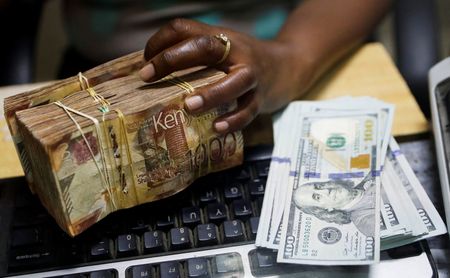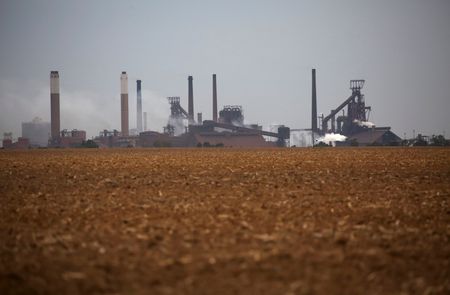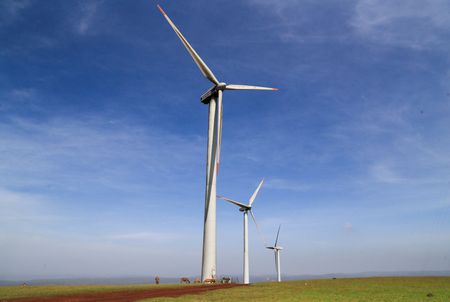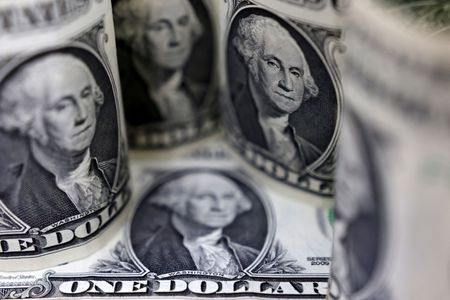By Rae Wee and Stephen Culp
SINGAPORE/NEW YORK (Reuters) – Global shares rose on Thursday in a modest relief rally as fears of an escalating trade war between the U.S. and its major trading partners ebbed, while U.S. Treasury yields came under pressure as traders pondered the country’s rate outlook.
European stock futures pointed to solid gains ahead of a slew of earnings releases, extending a rally from the previous session in part due to a surge in healthcare stocks as sales of Novo Nordisk’s blockbuster drug Wegovy more than doubled in the fourth quarter.
EUROSTOXX 50 futures rose 0.5%, while FTSE futures jumped 0.8%. DAX futures climbed 0.56%.
Wall Street was similarly poised for a positive open, with S&P 500 futures and Nasdaq futures gaining more than 0.2% each.
Amazon’s earnings are due later in the day, where the pressure is on for it to deliver on lofty expectations for cloud computing after lacklustre reports from Microsoft and Alphabet jolted investor faith in Big Tech’s huge investments in artificial intelligence.
And though many uncertainties remain under U.S. President Donald Trump’s new administration, markets were for the most part relieved that things were not worse, particularly with regard to the tit-for-tat tariff moves.
That helped lift global share markets and kept the dollar in check, giving some respite to its peers that had been heavily battered at the start of the week.
“Relief is probably a good way to characterise (the market mood),” said Khoon Goh, head of Asia research at ANZ.
The People’s Bank of China on Thursday again set a stronger-than-expected yuan midpoint fixing, though the yuan still weakened after China sought the World Trade Organization’s intervention to rule on new tariffs imposed by Trump.
China’s commerce ministry also said on Thursday that Beijing is ready to work with other countries to jointly respond to the challenges of unilateralism and trade protectionism, and labelled U.S. tariffs “vile”.
The onshore yuan last stood at 7.2845 per dollar, while its offshore counterpart eased 0.05% to 7.2862.
“Chinese authorities at this stage are not indicating or showing any intention of weakening the yuan as part of the response to the tariffs. I think that has definitely helped to calm the market down,” said ANZ’s Goh.
China’s CSI300 blue-chip index jumped more than 1% as investors continued to bet on domestic AI firms following Chinese start-up DeepSeek’s breakthrough.
The Shanghai Composite Index gained 1.16%.
MSCI’s broadest index of Asia-Pacific shares outside Japan advanced 0.44%, while Japan’s Nikkei tacked on 0.6%.
RATES OUTLOOK
U.S. Treasury yields were hovering near their lowest in over a month on Thursday, as investors were uncertain about the outlook for rates in the world’s largest economy.
U.S. Treasury Secretary Scott Bessent said on Wednesday that while Trump wants lower interest rates, he will not ask the Federal Reserve to cut rates.
Bessent said in an interview with Fox Business Network that he and Trump are focused on the 10-year Treasury.
“Certainly, those comments were interesting, and perhaps a little surprising, though likely suggest that Bessent is having something of a moderating influence on Trump, given that he appears to have steered the President away from direct attacks on the Fed – at least for now,” said Michael Brown, senior research strategist at Pepperstone.
“At the moment (I) think this is more about rhetoric than any firm action, which is likely why market participants have by and large shrugged the comments off, and there hasn’t been a considerable reaction.”
Bessent made the comments before Fed Vice Chair Philip Jefferson, who said he is content to keep the central bank’s policy rate in its current position until policymakers get a better sense of the net effects of the Trump administration’s policies on tariffs, immigration, deregulation and taxes.
The benchmark 10-year Treasury yield was steady at 4.4342%, while the two-year yield edged slightly higher to 4.2055%.
Futures point to just about 45 basis points worth of easing from the Fed by the year-end..
In currencies, the dollar was on the back foot.
“The central vibe running through trade has been the solid bid in U.S. Treasuries, with the U.S. dollar finding increased selling flows across the G10 FX complex,” said Chris Weston, head of research at Pepperstone.
Against the dollar, the euro hovered above the $1.03 level and last bought $1.0390, while sterling strayed not too far from a one-month high and was fetching $1.2480.
The Bank of England announces its rate decision later on Thursday, where it looks set to deliver a rate cut.
The yen, meanwhile, was little changed at 152.59 per dollar, after earlier rising on comments from Bank of Japan board member Naoki Tamura who said the central bank must raise short-term interest rates to at least 1% by the second half of fiscal 2025 to contain inflation risks.
In commodities, oil prices rose, steadying from a sell-off the previous day after Saudi Arabia’s state oil company sharply raised March oil prices.
U.S. crude edged 0.42% higher to $71.33 a barrel, while Brent crude rose 0.31% to $74.84 per barrel.
Gold eased from a record peak and was last at $2,860.11 an ounce. [GOL/]
(Reporting by Rae Wee and Stephen Culp; Editing by Daniel Wallis, Kim Coghill and Jamie Freed)








